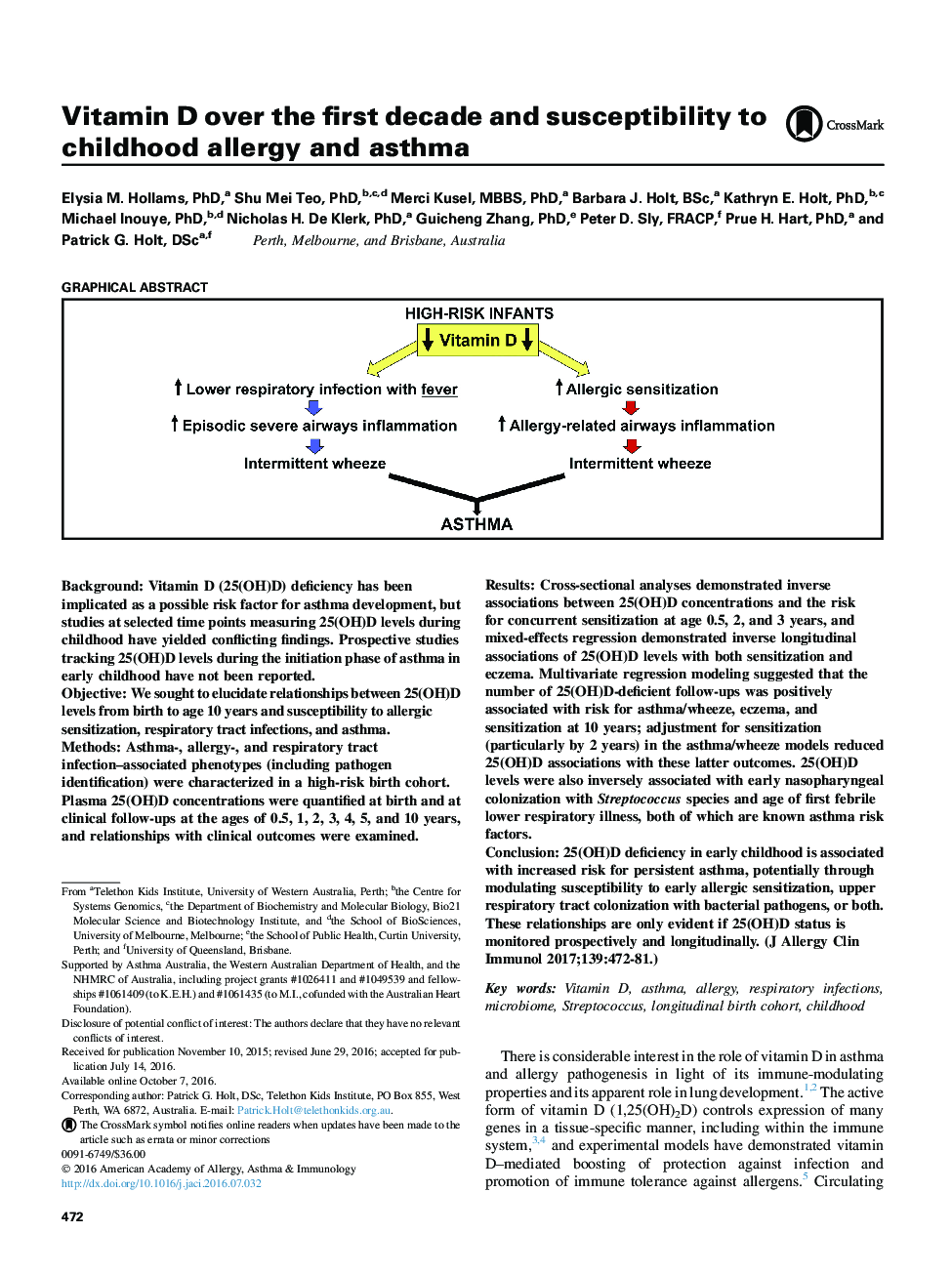| کد مقاله | کد نشریه | سال انتشار | مقاله انگلیسی | نسخه تمام متن |
|---|---|---|---|---|
| 5646720 | 1407070 | 2017 | 19 صفحه PDF | دانلود رایگان |

BackgroundVitamin D (25(OH)D) deficiency has been implicated as a possible risk factor for asthma development, but studies at selected time points measuring 25(OH)D levels during childhood have yielded conflicting findings. Prospective studies tracking 25(OH)D levels during the initiation phase of asthma in early childhood have not been reported.ObjectiveWe sought to elucidate relationships between 25(OH)D levels from birth to age 10 years and susceptibility to allergic sensitization, respiratory tract infections, and asthma.MethodsAsthma-, allergy-, and respiratory tract infection-associated phenotypes (including pathogen identification) were characterized in a high-risk birth cohort. Plasma 25(OH)D concentrations were quantified at birth and at clinical follow-ups at the ages of 0.5, 1, 2, 3, 4, 5, and 10 years, and relationships with clinical outcomes were examined.ResultsCross-sectional analyses demonstrated inverse associations between 25(OH)D concentrations and the risk for concurrent sensitization at age 0.5, 2, and 3 years, and mixed-effects regression demonstrated inverse longitudinal associations of 25(OH)D levels with both sensitization and eczema. Multivariate regression modeling suggested that the number of 25(OH)D-deficient follow-ups was positively associated with risk for asthma/wheeze, eczema, and sensitization at 10 years; adjustment for sensitization (particularly by 2 years) in the asthma/wheeze models reduced 25(OH)D associations with these latter outcomes. 25(OH)D levels were also inversely associated with early nasopharyngeal colonization with Streptococcus species and age of first febrile lower respiratory illness, both of which are known asthma risk factors.Conclusion25(OH)D deficiency in early childhood is associated with increased risk for persistent asthma, potentially through modulating susceptibility to early allergic sensitization, upper respiratory tract colonization with bacterial pathogens, or both. These relationships are only evident if 25(OH)D status is monitored prospectively and longitudinally.
186
Journal: Journal of Allergy and Clinical Immunology - Volume 139, Issue 2, February 2017, Pages 472-481.e9